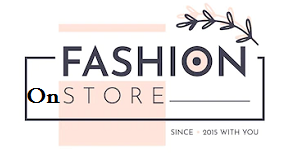Who Buys Sunglasses – The Target Market for Shades

Whether you have a physical retail outlet selling sunglasses on a rack or an ecommerce site expanding your inventory with the same, you essentially have two options when it comes to deciding upon the right kind of shades to stock. The reasons why sunglasses are such a popular item to stock are manifold, but one of the biggest ones is that they can hold appeal to two completely distinct kinds of customer.
We are talking here about the difference between expensive designer sunglasses – think Ray Bans, Nelson Amber, Oakleys – and the low-priced wholesale sunglasses that you can find from various distributors. When trying to figure out who the target market is for your sunglasses, the customers will mainly be split into those looking for designer sunglasses and those looking for practical sunglasses (where a part of that practicality is price).
A Note About Quality
Before examining these two markets, it is very much worth getting a point about relative quality out the way first. While in most cases a pair of sunglasses costing $10 are going to score less on metrics of quality than a pair costing $1000, the disparity is not as huge as you might think. There is a quite simple reason for this.
When you buy a pair of designer sunglasses, what you are actually paying for is a brand name. This is what makes them fashionable and is the reason why those looking for practical sunglasses don’t normally go for designer shades. Shades that are not about practicality – they merit their price tag from celebrity endorsements and brand prestige.
Coming to the inexpensive sunglasses – people buy these because they need them for some practical purpose. Olympic Eyewear, a wholesaler of such sunglasses, offer a wide range within every wholesale batch they sell to outlets for precisely this reason. People could be buying them for sports, for driving, for the sun (of course), for UV protection (even in winter), and for many other reasons. The convenience of being able to pick up a pair of sunglasses from an assorted set in a store or online is what drives the sales.
Who Buys Shades?
So, as you can see, there are two very distinct markets for sunglasses and a set of customers with hugely different priorities. To optimize your marketing strategies, you need to know about these markets. However, these are only broad categories and there is quite some variety within them. There are other market groups buying sunglasses, all of whom are best classified according to what it is they value in a pair of sunglasses.
Design
A customer is distinguished by what type of design they are after. Naturally, the fashionistas are looking to the more expensive brand-name sunglasses, though many of the inexpensive ones are plenty stylish too. Men look for a different style compared to women, and so on.
Activity
Sunglasses can be used on a scorching beach and a snowy slope, and the type of customer purchasing a particular type of sunglasses may be doing so for a specific activity. There are sunglasses for drivers, snowboarders, and surfers. Activity also determines the market for any given pair.
Other Motivations
Other motivations can determine the target market for a pair of sunglasses. People can buy sunglasses to hide their eyes or an injury (which isn’t really a specific market demographic) or they could be buying them to protect sensitive eyes (which certainly is).
Whatever type of sunglasses you are selling, you need to be aware that the potential markets are many and diverse. It’s pretty much impossible to corner any single one, so always consider the why of a sunglasses purchase.






